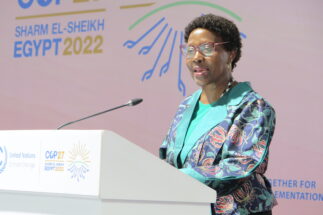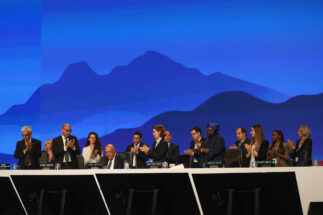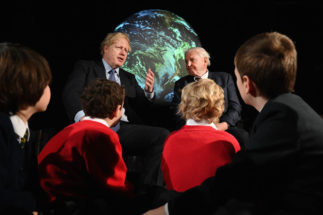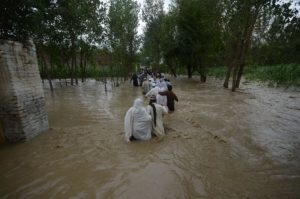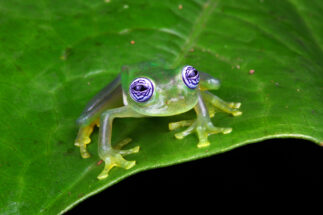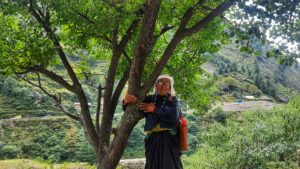After two years of postponements, virtual meetings and a location change from China to Canada, the UN Convention on Biological Diversity’s talks on the protection of the natural world will finally open in two weeks’ time.
The COP15 summit, set to be held 7–19 December in Montreal, is expected to conclude with an agreement on the delayed Post-2020 Global Biodiversity Framework. However, many countries differ on a number of key issues, especially on finance for biodiversity protection.

The conference arrives hot on the heels of the recent COP27 climate talks in Egypt, an event attended by the CBD’s executive secretary, Elizabeth Mrema, who used her visit to highlight the need to link action on climate and biodiversity. Mrema also sought to progress biodiversity negotiations ahead of COP15, with various ministers and delegates meeting on the sidelines of the Egypt summit to discuss the state of play for the new framework, attempting to eliminate some of the many brackets that still remain in its draft text.
Speaking with Diálogo Chino at COP27, Mrema said the draft in its current form is looking promising, but she has some concerns over how it may turn out once bracketed items have been finalised. The CBD head also stressed the need to secure funding for biodiversity for developing countries, while highlighting that this is the “last chance” to address the biodiversity crisis.
Diálogo Chino: Many of the people that will be in Montreal were also at COP27, from ministers to civil society organisations. Are you hopeful for the agreement based on the conversations that you have had in Egypt?
Elizabeth Mrema: This has been an excellent opportunity in terms of continuing to prepare the delegates for the final negotiations in Montreal and the post-2020 biodiversity framework. Environment ministers in Egypt met among themselves on the side of the climate talks and discussed some of the issues that are yet to be resolved in the framework. I went to COP27 with the co-chair responsible for the development of the framework, and we also met with the ministers to see where they think more work has to be done and to bridge differences. But the devil is in the detail and the detail will be in Montreal.
How would you describe the state of play in the biodiversity negotiations?

Personally, I have mixed feelings. On one hand, the text is good as it is. A lot of work has to be done. It includes all the ambition one would expect in the post-2020 framework and builds and learns from the lessons of the Aichi biodiversity targets [the previous biodiversity framework]. On the other hand, the text is still full of brackets. And when the brackets are removed I’m not sure if that will remove the ambition or strengthen it.
In this inter-sessional period before COP15, the co-chairs organised an informal group to sit down and look at the heavily bracketed document and make some sense of it. They were able to reduce brackets by 40%. The question is that this was an informal group, and we still need the parties to agree and own this document as a starting basis to continue the negotiations in Montreal. If they don’t, and we continue with the text as it is, with 800 brackets, then we will have more work to do and no sleeping.
What are the most contentious issues between countries at the moment?
A key one is the means of implementation of the framework when it is adopted. This includes resource mobilisation, finance for implementation, monitoring and accountability. Finance is a key question, as with climate. Developing countries want assurance that there will be adequate resources for implementation. In recent months there have been announcements and pledges of funding, and this is good news. With the Aichi targets, it took up to four years before countries began implementation. We have to avoid that here.
Developing countries want assurance that there will be adequate resources for implementation
Scientists are telling us this is the last chance. We can’t go back to business as usual and this is what the framework is intended for. It’s about creating the pathway to enable the world to reach the 2050 vision of living in harmony with nature with goals and targets for 2030.
How would you describe an ideal biodiversity framework?
We already have an ambitious draft framework. If negotiations succeed in removing the brackets and retaining the ambition intended then we will have succeeded. We need the negotiations to agree on the entire package of the framework, with all the targets. It’s not a question of pick and choose. All targets are integrated and related to each other. Then, when it’s adopted, it’s all hands on deck, with the entire society participating in the framework.
The need for marine protected areas is among the targets mentioned most in the framework – for example, with the campaign to have 30% of the ocean protected by 2030. What progress has there been on this so far?
We know there has been a lot of campaigning for “30 by 30”, which is good. But not all negotiators have agreed on that. There are two aspects to it: there’s the scale of 30 by 30, but even more important is the effective management of the areas. Many countries are worried if they will have the resources for that. In addition, 30 by 30 is one target, but we have the entire package [of the post-2020 framework]. We shouldn’t focus on one element in isolation from the others, or we won’t solve the biodiversity challenge.
In terms of logistics, how is the conference shaping up? Will heads of state travel to Montreal?

Logistics are shaping up very well. I know there have been calls to have the heads of state [attend], but that’s not happening. Under the presidency of China, we had a summit during the first part of the COP, in October last year, where pledges were made by heads of state. We also had the Kunming Declaration and the Kunming Biodiversity Fund. We now also had pronouncements at [climate] COP. We had what was needed from the heads of state. What’s important now is for the negotiators to translate those pledges into the document and be ready to create the necessary consensus. Over 100 ministers will be in Montreal, alongside 10,000 registered participants.
Was the decision not to have heads of state in attendance taken by China as the conference’s president?
It was a consultation between the presidency and the COP Bureau. The bureau is regionally represented [by all UN regional groups].
The need to update or change UN institutions has been repeatedly mentioned by civil society, with some even suggesting having a single “environment COP” instead of one for climate and another for biodiversity. Is that feasible?
It’s something that can be developed, but I wouldn’t call it a “COP”. All the Rio conventions [on climate change, biodiversity and desertification, established in 1992] have their own legally binding instruments, so talking of one COP means amending all three conventions. We don’t want to get into that. What governments may wish to consider is calling a conference that looks at all the crises together – a separate conference to discuss the common issues that cut across land degradation, biodiversity loss and climate change.
WWF’s Living Planet report recently warned about a severe state of crisis for global biodiversity. What have we been doing wrong in recent years?
The negotiations and implementation of the previous biodiversity targets didn’t engage all stakeholders. Not everyone “owned” the Aichi biodiversity targets. Biodiversity is a cross-cutting issue that can’t be dealt with only by governments, and without Indigenous leaders and the private sector. That’s a major lesson learnt. Now all stakeholders can see themselves in the draft framework.
The Convention on Biological Diversity’s COP15 summit takes place in Montreal, Canada, from 7 to 19 December.
